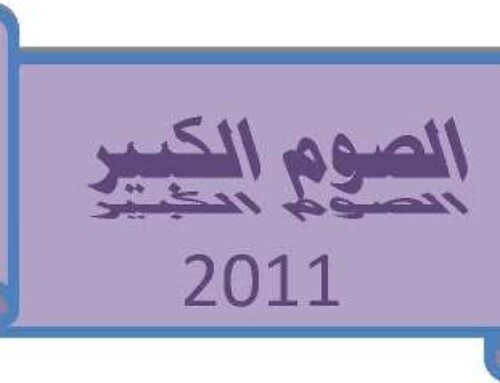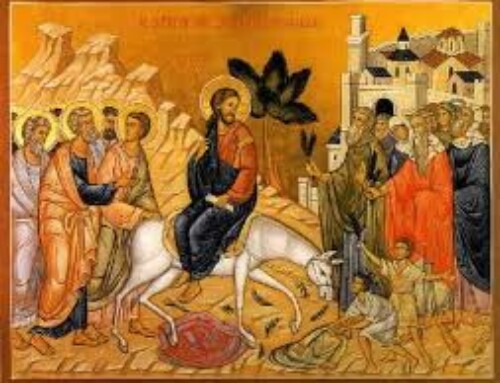Word Magazine May 1992 Page 8-9
SUNDAY OF ORTHODOXY: 1992
By Bishop ISAIAH of Aspendos
Once again Orthodox Christians the world over in large congregations and in small numbers gather this day to celebrate the Sunday of Orthodoxy. We have come here for the same purpose. We have gathered together in an annual pilgrimage to recall the holy event in 843 A.D., when the icons which had always been a basic part of the life of the Church were finally returned to their rightful place.
We know that the Church always had true worship from the beginning, from the days of the Apostles. We know also, that the teachings of the Church were not discovered or established as the years passed and as the Church grew in numbers and in stature. The Ecumenical Councils never established new teachings, but only declared what had been accepted and recognized from the beginning. Moreover, the Councils separated Orthodox teachings from those considered new. As a rule anything that is heretical is something new, something that comes along to alter or to change that which has always been true.
So it was with the period of iconoclasm. It was something new that came into the life of the Church to change what was already there. The attack against icons and their use began over seven hundred years after the Church was established. Nevertheless, heresies and iconoclastic philosophies have always been attacking the Church from the very beginning and down through the centuries. It is no different today.
There are forces all around us, overtly inimical as well as subtle ones, which are attempting to redefine what Orthodoxy teaches and believes. As we try to identify them, we do not have far to go; for virtually all heresies and iconoclastic teachings emerge not from the outside, but from within the Church. Arius was a priest of the Church. So was Nestorius. So were many more who supported heretical concepts. Holy Scripture tells us that in the latter days many anti-Christs will arise from within the Church.
During this latter part of the twentieth century, we find hierarchs who claim to be autocephalous leaders and who govern their own jurisdictions without any accountability to anyone. They want nothing to do with the main body of believers. Whether they are independent of the main Body of the Church because of temporary political conditions in some parts of the world, or because of calendar issues, they are iconoclastic entities that disrupt the unity of Orthodoxy. They, in their small world, believe themselves to be true and genuine, holding on to original Orthodoxy while the Church, that has continued an uninterrupted life from the day of Pentecost to the present, is the one they condemn as false and artificial.
Even within the Body of the Church here in North America, we are living with an iconoclastic form of administration. When the laity can control or dictate to the clergy this is a kind of iconoclasm. As the icons could not speak for themselves then, so today the voices of the clergy, bishops or priests, are not heeded. To make matters worse, when one priest goes to the secular courts and sues another priest of the same or another jurisdiction, then this iconoclastic behavior becomes even suicidal. We well know of laity reverting to the secular courts against their clergy because they view their parishes as “incorporated” organizations, but for one priest to go against another brother priest, how much worse can it get?
In the pages of history, we see many examples of suicidal iconoclasm. The Fourth Crusade, which resulted in Western Christians killing Eastern Christians, was that sort of thing. So were the inquisitions in Spain. So were the witch hunts in Salem during the earliest days of the Colonies. The slaughter of almost one million Orthodox Serbians in 1941 by the Roman Catholics who had established an independent Croatia under the Ustashis was iconoclasm at its ugliest. Even before that when the former Orthodox seminarian Stalin was responsible for the starvation deaths of up to six million Ukrainians, both Uniates and Orthodox, in the false famine of 1933, this was satanic iconoclasm.
Whenever a human being is mercilessly slaughtered by another when both see themselves as believers in God, this is iconoclasm at its worst. The first example of this was Cain’s slaughter of his brother Abel, and it continues unabated today in many parts of the world including Palestine, Iraq, Lebanon and South Africa.
All these historic facts are true examples of iconoclasm; for the word iconoclasm means to break God’s icon.” And who is God’s icon? Every human person is God’s icon.
We, here — all of us — are icons of God. We are His reflections, His images. Saint Paul describes this best when he says, “I live, yet not I, but Christ lives in me.” How, then, can I, an icon of Christ, attempt to destroy another icon of Christ? Yet we all do it in one way or another. Any type of character assassination is also a kind of iconoclasm.
If we are to gather every year to honor the raising of the icons in the churches and to do it with a pure heart, we must begin to live the life of Christ to the best of our ability. Each of us can take example from one of the thoughts shared with you this day and to begin to work on what it means to honor Christ’s icon.
May I suggest that we begin by re-examining how we administer our parishes and how Christ desires for us to administer them.
The fact that our parishes are incorporated as not-for-profit entities does not mean that they belong under man’s law. We must begin to see ourselves and our parishes as belonging to God, not to rules of incorporation, not to ourselves, not to anyone or anything, but to Christ alone Who established the Church. When we begin to believe that we do not belong to ourselves, nor do we belong to any man-made law, or even to each other, then we will joyfully realize that we belong to Christ and that we are the stewards of what already is His.
We are members of the Body of Christ on earth. He has only one Body, not many. And if we are members of His Body, then we all, cooperating with one another, are one with Him. Therefore there can be no one in any parish, priest or council president, choir directors or chanters, ushers or benefactors, nor any other member who would lord it over any other; for we are all servants of the same Master; the only head of the local parish and of the Church in the world, our Lord and Savior Jesus Christ. He suffered and died for us, and He established His Church on earth as the Ark of Salvation for you and for me and for all who love him and His Parousia (Second Coming).
To be true members of the Church means to see the Church only and always as a divine institution.
The Sunday of Orthodoxy then is the raising of Christ in our hearts not only today, but every day of our lives. As we enter into the total experience of the Great Lenten Season we are all invited and encouraged to do exactly this: to raise Christ up and to lower our egos lower and lower. It is man’s ego that identifies him with the world and the things of the world. It is man’s ego that identifies the Church as a worldly organization rather than as God’s institution. Once the ego is lowered, then we can see the Church as She was meant to be. Then we can see Christ Himself within us. Through His death on the Cross, He established His Church. He died and rose again and became one with us. We are one with Him when we see Him within our hearts. Otherwise we also are iconoclasts, giving strength to the evil forces in the world that have one purpose only and that is to obscure our vision from seeing Him. The less we see Him in our lives, the more we tear away from each other, as Satan tore away from God and chose to remain away from him forever. Our task is to tear away from the things of the world, the things that separate us from Christ.
Our desire, our decision during this holy Lenten season should be to invite Him within us to stay forever. As we work at this, we will hold high his holy Icon for us and the world to see and to know that Christ is the Lord, the only Savior of the world and of all creation. To him be power and honor and glory now and forever. AMEN.
Bishop ISAIAH is the Chancellor of the Greek Orthodox Archdiocese of North and South America. He delivered this homily when be presided at the Sunday of Orthodoxy Vespers at the St. Nicholas Cathedral (Antiochian,) in Brooklyn, NY on March 15, 1992.



